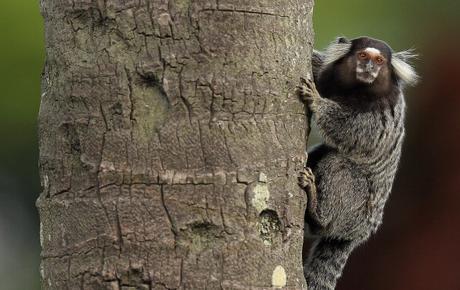In School days – in our History read about ‘Shogun’ rulers - the military dictators of Japan during most of the period spanning from 1185 to 1868. Nominally appointed by the Emperor, shoguns were usually the de facto rulers of the country, with a bugging Q that – why are WE reading all these and in what way would these be of any use ! – as we grow and we read – there is so much of information available in WWW – though not all could be considered useful – yet these leaves us dumbfounded thinking that what we claim to know is too miniscule
Today read about something about Scheneider – far away from what we have heard - Schneider Electric SE, a French multinational company providing energy and automation digital solutions for efficiency and sustainability .. .. this Schneider is different !!

A team of scientists has discovered a new marmoset species in the Brazilian Amazon. Schneider’s marmoset (Mico schneideri), described in the latest issue of the journal Scientific Reports, is named after professor Horacio Schneider, a pioneer and major contributor to the research of diversity and evolution of monkeys. Was surprised to read that some primates were discovered and classified last year too !
As we proceed here are some clues : Kingdom:Animalia; Phylum: Chordata; Class: Mammalia; Order: Primates; Suborder:Haplorhini; Infraorder: Simiiformes – can you decipher what this order is about .. .. it is us, the humans !!
Homo (from Latin homō 'man') is the genus that emerged in the (otherwise extinct) genus Australopithecus that encompasses the extant species Homo sapiens (modern humans), plus several extinct species classified as either ancestral to or closely related to modern humans (depending on the species), most notably Homo erectus and Homo neanderthalensis. Homo sapiens (anatomically modern humans) emerged close to 300,000 to 200,000 years ago, most likely in Africa, and Homo neanderthalensis emerged at around the same time in Europe and Western Asia .. ….and so goes the theories !
Carl Linnaeus was a Swedish botanist, zoologist, taxonomist, and physician who formalised binomial nomenclature, the modern system of naming organisms. He is known as the "father of modern taxonomy". Many of his writings were in Latin. Linnaeus was born in Råshult, the countryside of Småland, in southern Sweden. He became professor of medicine and botany at Uppsala. In the 1740s, he was sent on several journeys through Sweden to find and classify plants and animals. In the 1750s and 1760s, he continued to collect and classify animals, plants, and minerals, while publishing several volumes. He was one of the most acclaimed scientists in Europe at the time of his death.
A primate (from primus 'prime, first rank') is a eutherian mammal constituting the taxonomic order Primates. Primates arose 85–55 million years ago first from small terrestrial mammals, which adapted to living in the trees of tropical forests: many primate characteristics represent adaptations to life in this challenging environment, including large brains, visual acuity, color vision, a shoulder girdle allowing a large degree of movement in the shoulder joint, and dextrous hands. The name ‘primates’ was given by Carl Linnaeus because he thought this the "highest" order of animals. The relationships among the different groups of primates were not clearly understood until relatively recently, so the commonly used terms are somewhat confused. For example, ape has been used either as an alternative for monkey or for any tailless, relatively human-like primate.
As primates are a well-studied group, species that are unknown to science are rare. However, recent advances in DNA sequencing have allowed scientists to compare populations and test for distinct lineages in extant species. This list includes species that have been discovered, formally described, or brought to public light in the year 2020 or later. New primate species are recorded by the International Union for Conservation of Nature Species Survival Commission (IUCN/SSC) Primate Specialist Group. In the previous ten years 36 primates were described.
Schneider's marmoset (Mico schneideri) is a species of marmoset of the genus Mico in the family Callitrichidae. Endemic to Brazil, it is found in the Amazon rainforest of Mato Grosso state. It is found on the interfluve between the Juruena and Teles Pires rivers. Schneider's marmoset is found in primary and secondary terra firma rainforests and in the transition zone to the Cerrado.
Previously misidentified as Emilia's marmoset (Mico emiliae), a morphological and phylogenetic study in 2021 showed the species is distinct and it was formally described as a new species. Schneider's marmoset has a lead-coloured saddle and rump with cream-silver underparts. There is gray fur on the back of its neck and on top of its head. Its hands are light orange, its feet are orange, and its tail is black. Schneider's marmoset is found in the "arc of deforestation", a 2,500 km stretch of the Amazon rainforest which is under greatest pressure from deforestation, mostly due to agricultural encroachment.
What amazes is the deep study, research and effort put by some Nations, Organisations – in realigning human understanding of various species.
With regards – S. Sampathkumar11th Oct 2021.

